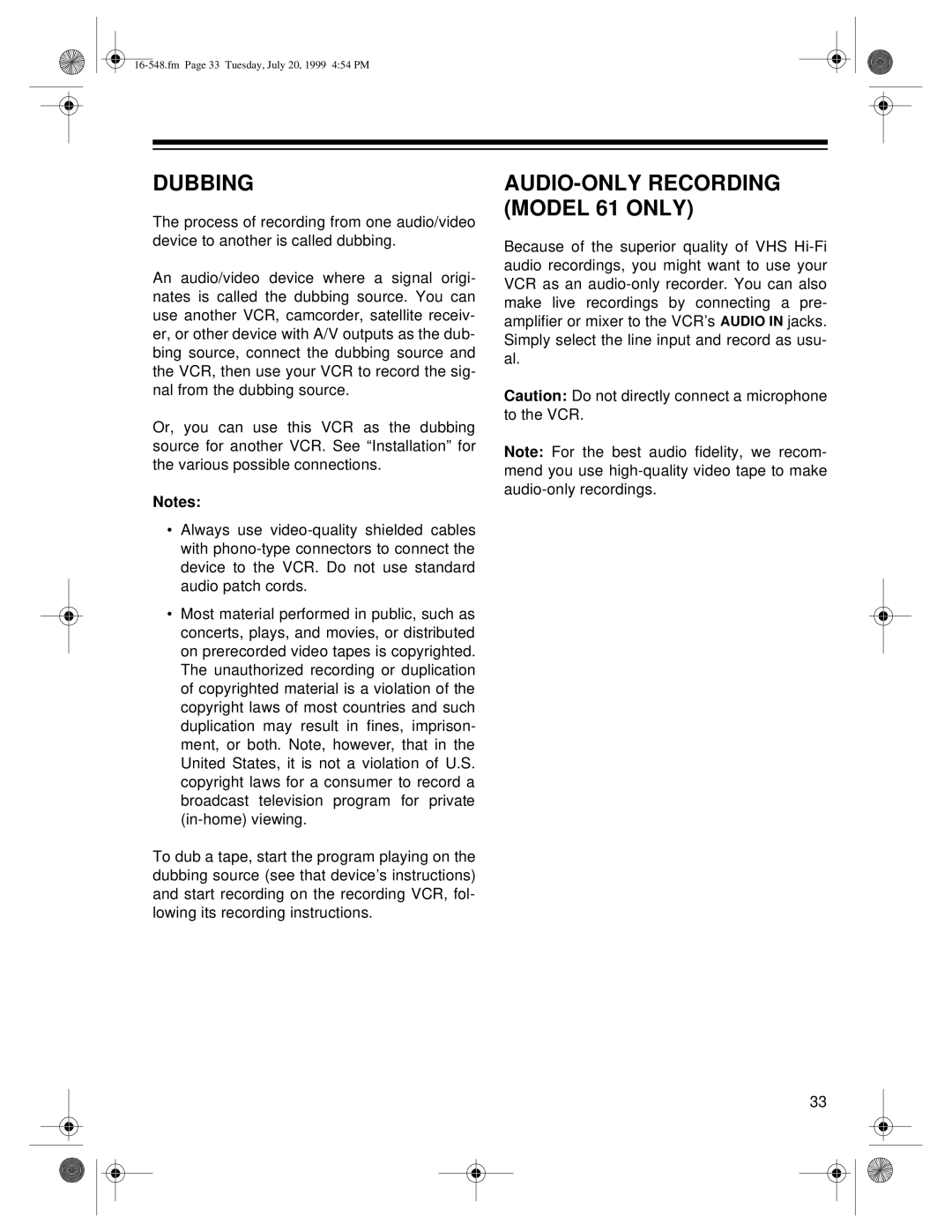
DUBBING
The process of recording from one audio/video device to another is called dubbing.
An audio/video device where a signal origi- nates is called the dubbing source. You can use another VCR, camcorder, satellite receiv- er, or other device with A/V outputs as the dub- bing source, connect the dubbing source and the VCR, then use your VCR to record the sig- nal from the dubbing source.
Or, you can use this VCR as the dubbing source for another VCR. See “Installation” for the various possible connections.
Notes:
•Always use
•Most material performed in public, such as concerts, plays, and movies, or distributed on prerecorded video tapes is copyrighted. The unauthorized recording or duplication of copyrighted material is a violation of the copyright laws of most countries and such duplication may result in fines, imprison- ment, or both. Note, however, that in the United States, it is not a violation of U.S. copyright laws for a consumer to record a broadcast television program for private
To dub a tape, start the program playing on the dubbing source (see that device’s instructions) and start recording on the recording VCR, fol- lowing its recording instructions.
AUDIO-ONLY RECORDING (MODEL 61 ONLY)
Because of the superior quality of VHS
Caution: Do not directly connect a microphone to the VCR.
Note: For the best audio fidelity, we recom- mend you use
33
